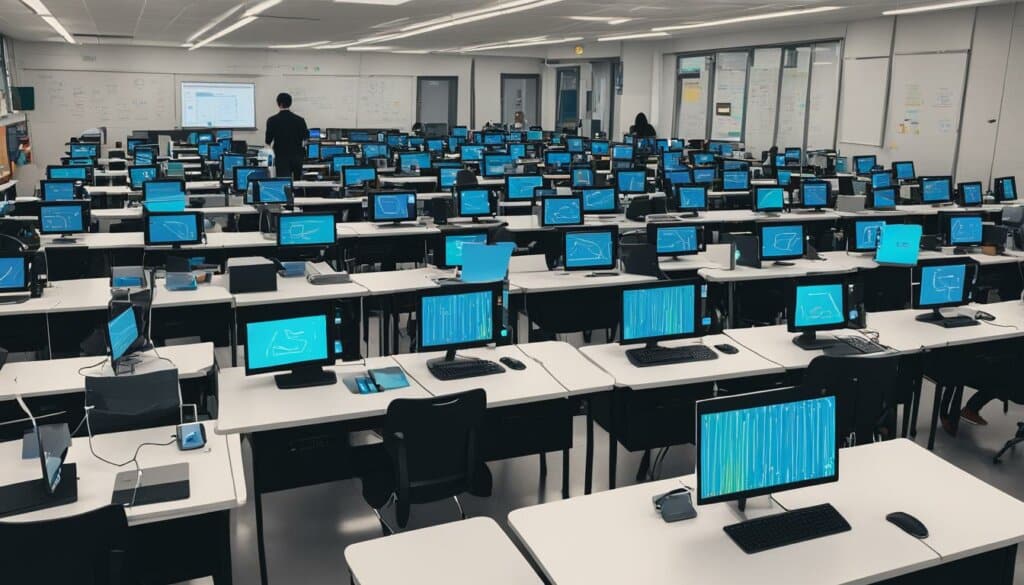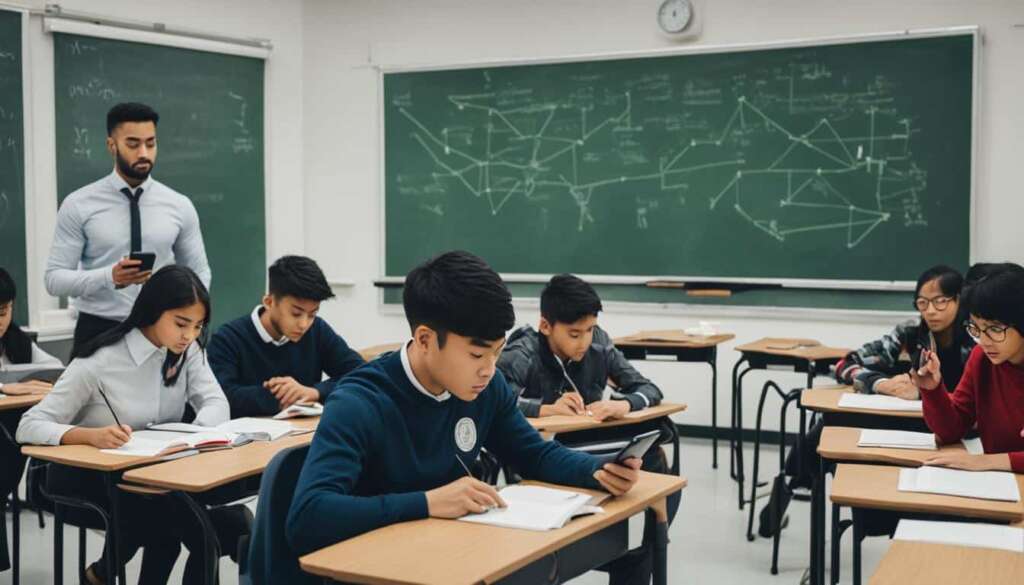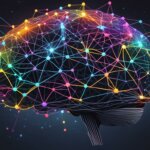Table of Contents
Are your students using ChatGPT to cheat on assignments and exams? Identifying ChatGPT usage in student work is essential for maintaining academic integrity. In this article, we will discuss how you can tell if a student has used ChatGPT and detect its usage in their work.
ChatGPT is a powerful AI language model that allows students to generate text effortlessly. However, there are ways to detect its use. Plagiarism checkers and AI content checkers can be effective in flagging ChatGPT-generated text. By carefully reading the text, you can identify differences in style or tone that might indicate the presence of ChatGPT. Unusual word choices, repetitive sentence structures, and a lack of originality are common signs of ChatGPT-generated content.
Language analysis tools and pattern recognition can also help you identify the usage of ChatGPT. By comparing the writing to known AI-generated text, you can spot deviations and inconsistencies. Additionally, seeking the expertise of human professionals can provide valuable insights in detecting ChatGPT usage.
Throughout this article, we will explore various methods and challenges in identifying ChatGPT usage in student work. Continue reading to gain a comprehensive understanding of how to maintain academic integrity and detect the influence of ChatGPT in the classroom.
Spotting Signs of AI-Generated Content in Student Work
When evaluating student work, it is essential to be able to recognize signs of AI-generated content. ChatGPT, a powerful AI language model, is increasingly being used by students to complete academic tasks. To ensure academic integrity, educators need to be able to identify artificial intelligence use in student responses. By learning to detect chatbot-generated responses, teachers can effectively identify instances when students have employed ChatGPT in their work.
There are several key indicators that can help in recognizing chatGPT in academic tasks. One prominent sign is the presence of unusual word choices. ChatGPT-generated content often includes phrases or terms that are uncommon or uncharacteristic of the student’s usual writing style. Educators should look out for language or vocabulary usage that differs significantly from what the student typically produces.
Another telltale sign of AI-generated content is the presence of repetitive phrases or sentence structures. ChatGPT tends to produce text that lacks creativity or critical thinking, resulting in similar patterns appearing throughout the writing. Educators should be on the lookout for instances where the student’s work exhibits a high degree of repetition or redundancy.
Sudden changes in writing style within a single piece of work can also indicate the use of ChatGPT. If there are inconsistencies in the tone, language, or overall style of the content, it may be a sign that the AI language model has been employed. Educators who are familiar with their students’ abilities will be able to spot deviations in writing style or knowledge.
Language analysis tools can be invaluable for identifying unusual word choices and repetitive sentence structures. These tools can provide objective insights and help educators differentiate between student-generated and AI-generated responses. By utilizing language analysis software, educators can more effectively identify instances where students have relied on AI language models like ChatGPT.
Being able to recognize signs of AI-generated content empowers educators to maintain the integrity of academic evaluation and ensure that students are authentically demonstrating their knowledge and skills. By staying vigilant and utilizing appropriate tools and techniques, teachers can effectively detect chatGPT usage in student work and uphold academic standards.
Using AI Detection Tools to Identify ChatGPT Usage
Schools and universities can leverage AI detection tools to identify automated chatbot use and determine the influence of ChatGPT in academic submissions and student responses. These tools employ advanced algorithms to analyze specific features that can help flag the presence of AI-generated content. By detecting patterns such as unusual word choices, repetitive sentence structures, and a lack of originality, educators can gain insights into potential ChatGPT involvement.
One effective method is to utilize pattern recognition technology, which can compare student work with known AI-generated text. This approach enables educators to identify instances where ChatGPT may have been used to generate responses or complete assignments.
However, while AI detection tools provide valuable insights, human experts play a crucial role in the process. Expert review and analysis of student work can help identify additional indicators of ChatGPT involvement, such as inconsistencies in writing style or the presence of AI-generated anomalies.
When it comes to AI detection tools, Content at Scale’s AI Detector stands out with its high accuracy rate in detecting AI-generated content. This powerful tool combines AI technology with human expertise to deliver reliable results in identifying ChatGPT usage in student work.
Detecting AI Involvement – Common Indicators
- Unusual word choices
- Repetitive sentence structures
- Lack of originality

| Feature | Description |
|---|---|
| Unusual word choices | AI-generated text often includes uncommon vocabulary or phrases |
| Repetitive sentence structures | ChatGPT may produce content with repetitive sentence patterns or structures |
| Lack of originality | AI-generated responses may lack creativity or unique ideas |
Using these AI detection tools and employing human expertise, educational institutions can effectively uncover instances of ChatGPT involvement in student work. By maintaining a proactive approach to identifying AI-generated content, educators can uphold academic integrity and ensure that students’ work reflects their own abilities and understanding.
Reasons for Professors Adopting ChatGPT in Education
Professors are finding valuable applications for ChatGPT in education, leveraging its capabilities to streamline tasks, enhance instruction, boost student engagement, and future-proof student learning.
Task Automation
By incorporating ChatGPT, professors can automate various tasks, such as:
- Grading essays
- Creating syllabi
- Providing feedback to students
With these time-consuming tasks automated, professors have more time to devote to teaching and research, ensuring a higher quality educational experience for their students.
Personalized Instruction
With ChatGPT’s ability to generate unique assignments and personalized feedback, professors can tailor instruction to each student’s needs. This promotes a more individualized learning experience and fosters student growth and engagement.
Improved Student Engagement
ChatGPT offers innovative ways to increase student engagement through:
- Interactive experiences
- Simulations
- Chatbots that respond to student questions
These dynamic elements empower students to actively participate in their education, making learning more enjoyable and effective.
Preparing Students for the Future
As AI and machine learning become increasingly prevalent, it is crucial to equip students with the skills to navigate this evolving landscape. ChatGPT can serve as a powerful tool in preparing students for the future of work, enabling them to:
- Develop an understanding of AI and machine learning tools
- Gain hands-on experience with these technologies
This preparation ensures that students are well-equipped to succeed in a digitally-driven world.
By embracing ChatGPT in education, professors can automate tasks, personalize instruction, improve student engagement, and prepare students for the future. The integration of AI technologies like ChatGPT holds great potential in revolutionizing the educational landscape.
Detecting ChatGPT Usage in Universities
Universities employ various strategies to detect the use of ChatGPT in coursework and academic assignments. Plagiarism detection tools such as Turnitin or Copyscape play a crucial role in identifying instances where students submit work that closely resembles publicly accessible material or previously submitted papers, including content generated through AI models like ChatGPT.
In addition to automated tools, human educators play a vital role in detecting AI-written text through careful examination of students’ work. Educators with experience and expertise can spot deviations in writing style, inconsistencies in content, or a lack of original thought that may indicate the use of ChatGPT or other AI models.
Universities have established policies and rules against the use of AI for academic assignments, and any violations can be detected through various methods, ensuring the academic integrity of the institution and the educational experience for all students.
“Plagiarism detection tools and the keen eye of human educators are key in identifying ChatGPT usage in universities, safeguarding the integrity of higher education institutions.”
Consider the following table showcasing the different methods universities employ to detect ChatGPT usage:
| Methods for Detecting ChatGPT Usage | Pros | Cons |
|---|---|---|
| Plagiarism detection tools | Efficient and accurate detection of AI-generated content. | Requires access and subscription to the detection software. |
| Human educators | Can provide detailed analysis and context-specific understanding. | Relies on educators’ expertise, time-consuming. |
| Academic policies and rules | Clear guidelines and standards for students to adhere to. | Requires continuous monitoring and enforcement. |
By combining technological solutions with human expertise and enforcing stringent academic policies, universities can effectively detect the usage of ChatGPT and other AI models, ensuring a fair and integrity-driven educational environment.
Challenges in Detecting ChatGPT Usage by Students
Detecting ChatGPT usage by students presents several challenges for educators. One of the main difficulties is that AI-generated content closely resembles human-written text, making it hard to distinguish between the two. This creates limitations in detecting ChatGPT usage and raises concerns about academic integrity.
The complexity of AI-generated text poses another challenge. ChatGPT can produce sophisticated and coherent responses, making it difficult to identify whether a student has used the AI model. Additionally, variations in writing styles among students further complicate the detection process.
Another obstacle is the lack of specialized detection tools for AI-generated content. Existing plagiarism checkers and content analysis software may not be optimized to identify ChatGPT usage specifically. Consequently, their effectiveness in detecting AI-generated text may be limited.
“The complexity of AI-generated text and the absence of specialized detection tools make it challenging for educators to effectively identify the use of ChatGPT by students.” – Expert Educator
Despite these challenges, educators can rely on their experience, intuition, and knowledge of their students’ abilities to identify inconsistencies in writing style and content. Being familiar with their students’ work can help them recognize deviations from typical patterns.
Advancements in AI detection software, such as the Turnitin AI Innovation Lab, are helping to address these challenges. These tools leverage advanced algorithms and machine learning techniques to enhance the detection of ChatGPT-generated content.
Educators can also collaborate with AI experts and researchers to develop more robust detection methods for identifying AI usage in student work. By staying updated on the latest developments in AI detection, educators can better adapt and respond to the evolving landscape of AI use in academic settings.
Limitations in Current Detection Methods
The current methods used for detecting ChatGPT usage have limitations that need to be addressed. The table below outlines these limitations and potential areas for improvement:
| Limitations in Current Detection Methods | Potential Areas for Improvement |
|---|---|
| Detection tools not optimized for AI-generated content | Development of specialized AI detection tools |
| Difficulty in distinguishing AI-generated content from human-written text | Advancements in language analysis algorithms |
| Variations in writing styles among students | Machine learning models to recognize individual writing patterns |
| Complexity of AI-generated text | Enhanced analysis techniques to uncover AI-generated patterns |
Overcoming these limitations is crucial to ensure the effective detection of ChatGPT usage and maintain academic integrity in educational institutions.
The Importance of Academic Integrity in Using ChatGPT
Maintaining academic integrity is crucial when incorporating ChatGPT into educational practices. Upholding the principles of academic honesty ensures that students develop valuable skills, demonstrate their knowledge, and foster a culture of trust within educational institutions.
Academic integrity encompasses a range of ethical considerations, including the appropriate and responsible use of AI writing tools like ChatGPT. Students must understand the boundaries and limitations of such tools to prevent violating academic rules and policies.
It is imperative that students refrain from using ChatGPT to cheat on assignments or exams. Engaging in such activities undermines the learning process and jeopardizes the fairness and credibility of assessments.
“Academic integrity is not just about avoiding misconduct; it’s about actively pursuing honesty, integrity, and excellence in all aspects of one’s academic journey.”
Educators play a vital role in instilling values of academic integrity in their students. They can educate students about the ethical use of AI writing tools, emphasizing the importance of originality and critical thinking in academic work. By promoting ethical practices, educators empower students to produce authentic and substantial contributions.
Additionally, students need to be aware of the potential risks associated with the misuse of ChatGPT. Plagiarism, whether intentional or unintentional, can have serious consequences, leading to academic penalties and damage to one’s reputation. Moreover, relying solely on AI-generated content can hinder the development of important cognitive and analytical skills.
By prioritizing academic integrity, both students and educators can ensure the ethical and responsible integration of ChatGPT in education. Striving for originality, critical thinking, and a commitment to learning produces a conducive environment for intellectual growth and achievement.
Next, we will discuss the challenges associated with detecting ChatGPT usage by students and explore how various methods can be utilized to overcome these hurdles.
Conclusion
In conclusion, detecting ChatGPT usage in student work is possible through various methods. Teachers can utilize plagiarism detection tools to identify instances of AI-generated text. Additionally, they can analyze the writing style and content, relying on their expertise to spot inconsistencies that may indicate the use of ChatGPT. Universities also have AI detection software in place to identify ChatGPT usage in coursework, ensuring academic integrity across their institutions.
However, it is crucial to maintain ethical practices and academic integrity when using AI tools like ChatGPT. Students should be aware of the potential risks and limitations of AI-generated content and strive to produce original work. Understanding the implications of relying on AI for academic assignments is important for upholding the integrity of the educational process.
By prioritizing ethical use and promoting originality, both educators and students can navigate the realm of AI technology in education while ensuring the authenticity and credibility of student work.
FAQ
How can I tell if a student used ChatGPT?
There are several ways to detect if a student has used ChatGPT. Plagiarism checkers and AI content checkers can flag ChatGPT-generated text. Reading the text carefully can help identify differences in style or tone. Unusual word choices, repetitive sentence structures, and a lack of originality are signs of ChatGPT-generated text. Language analysis tools, pattern recognition, and human experts can also be used to identify ChatGPT usage.
What are the signs of AI-generated content in student work?
ChatGPT-generated text often has unusual word choices, repetitive phrases, and lacks critical thinking, which can be signs of AI-generated content in student work. Sudden changes in writing style or errors and inconsistencies can also indicate the use of ChatGPT. Teachers who are familiar with their students’ abilities can spot deviations in writing style or knowledge. Language analysis tools can help identify unusual word choices and repetitive sentence structures.
How can AI detection tools be used to identify ChatGPT usage in student work?
Schools and universities can use AI detection tools to identify ChatGPT usage in student work. These tools analyze features such as unusual word choices, repetitive sentence structures, and a lack of originality. Pattern recognition can also be used to compare student work with known AI-generated text. Human experts can review and analyze student work to identify ChatGPT involvement. AI detection tools, such as Content at Scale’s AI Detector, have a high accuracy rate in detecting AI-generated content.
Why are professors adopting ChatGPT in education?
Professors are adopting ChatGPT in education for various reasons. ChatGPT can automate tasks such as grading essays, creating syllabi, and providing feedback to students, allowing professors to focus on teaching and research. It can also personalize instruction by creating unique assignments and providing personalized feedback to students. ChatGPT can improve student engagement by creating interactive experiences, such as simulations or chatbots that respond to student questions. Additionally, ChatGPT can help prepare students for the future of work by teaching them how to use AI and machine learning tools.
How can universities detect ChatGPT usage in coursework?
Universities can detect ChatGPT usage in coursework using plagiarism detection tools such as Turnitin or Copyscape. These tools can identify if a student’s work closely resembles publicly accessible material or previously submitted papers, including content produced by AI models like ChatGPT. Human educators can also detect AI-written text through careful examination of students’ work. Universities have policies and rules against using AI for academic assignments, and violations can be detected through various methods.
What are the challenges in detecting ChatGPT usage by students?
Detecting ChatGPT usage by students poses challenges as AI-generated content can closely resemble human-written text. Some limitations in detecting ChatGPT usage include the complexity of AI-generated text, the variation in writing styles, and the lack of specialized detection tools for AI-generated content. Educators rely on their experience, intuition, and knowledge of their students’ abilities to identify inconsistencies in writing style and content. However, advancements in AI detection software, such as the Turnitin AI Innovation Lab, have improved the ability to detect ChatGPT-generated content.
What is the importance of academic integrity in using ChatGPT?
Maintaining academic integrity is crucial when using ChatGPT in education. Students should not use ChatGPT to cheat on assignments or exams as this violates academic rules and policies. Using AI writing tools like ChatGPT should be done ethically and responsibly. Academic integrity ensures that students genuinely learn and demonstrate their knowledge. It is important for students to understand the limitations of ChatGPT and the potential risks of plagiarism or producing biased content.
How can I conclude if a student has used ChatGPT in their work?
In conclusion, it is possible to detect if a student has used ChatGPT in their work. Teachers can use plagiarism detection tools, analyze writing style and content, and rely on their expertise to identify AI-generated text. Universities also have AI detection software to identify ChatGPT usage in coursework. However, maintaining academic integrity and using AI tools ethically is essential. Students should be aware of the potential risks and limitations of AI-generated content and strive to produce original work.













